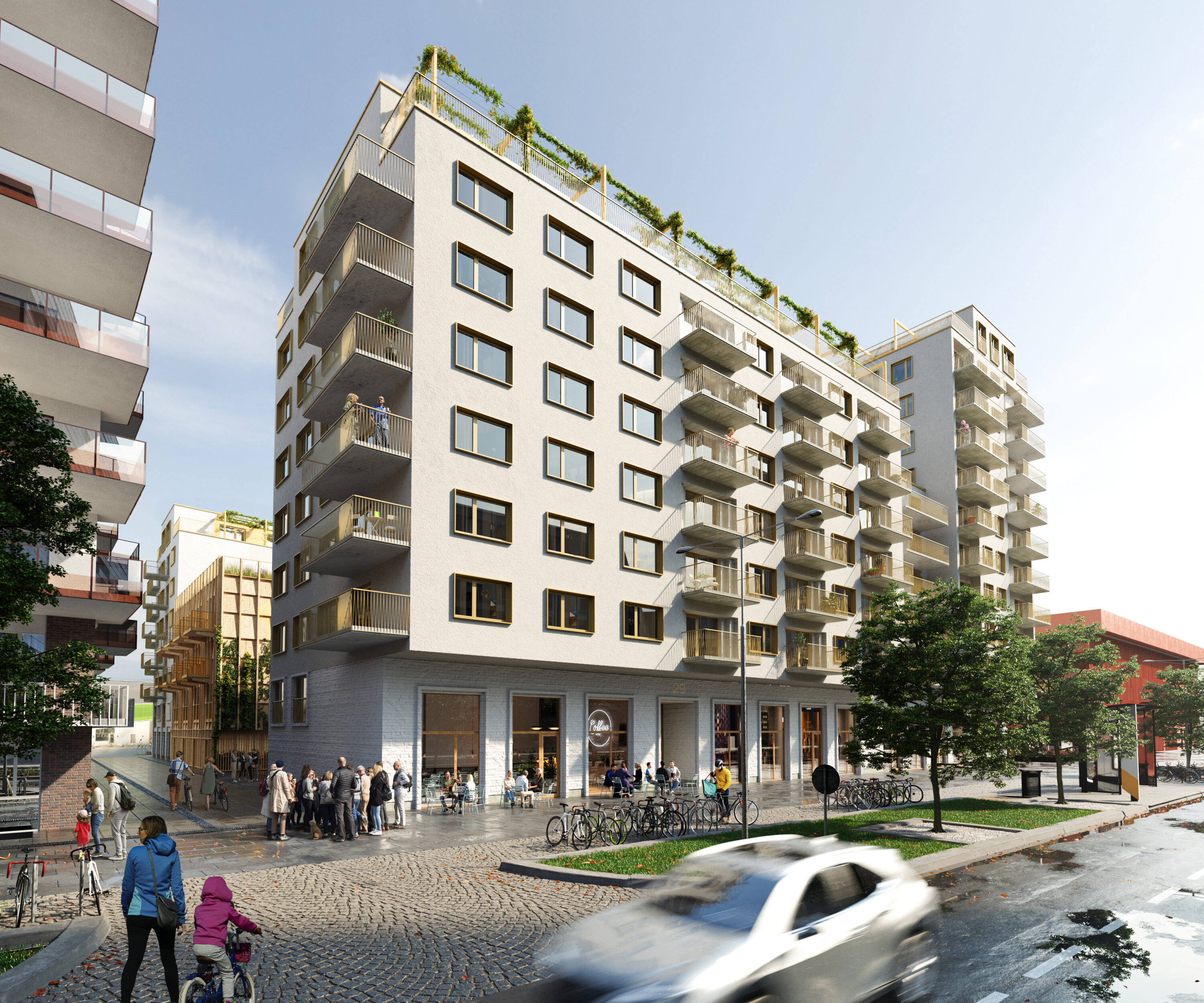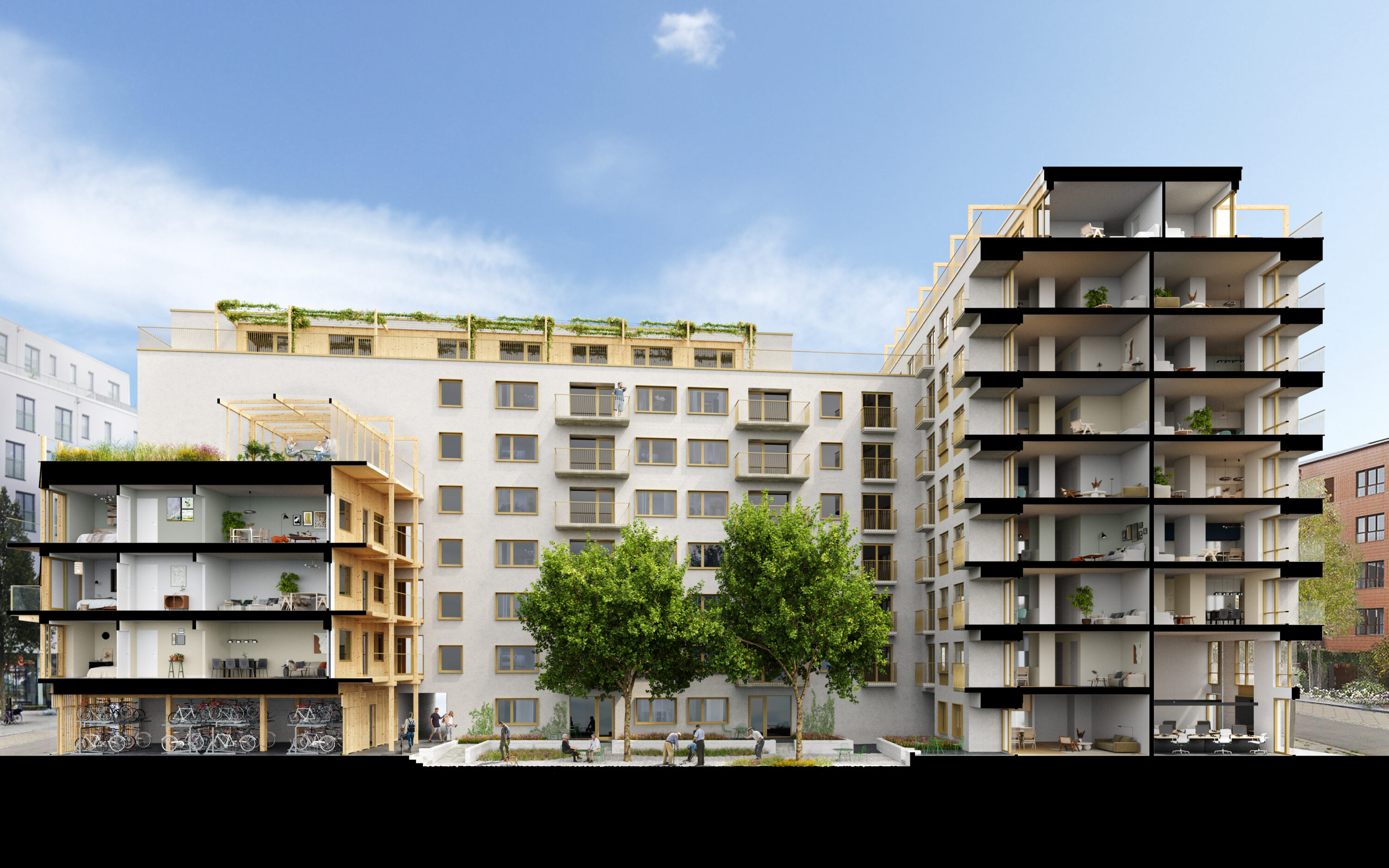2022-08-16
Victory in the competition for the last quarter of Masthausen
Following parallel assignments, FOJAB has been appointed to design the final piece of the puzzle in Masthusen in Malmö, the first BREEAM-certified district in the Nordic region. Part of the block is intended to be a pilot project for climate-neutral construction according to LFM30.
Kvarter 14 is the latest in Skandia Fastigheter's development of the area around Masttorget in Malmö's Västra hamnen district. The winning proposal includes approximately 240 apartments (over 14,000 square meters of living space) and public premises.
The design is based on - and builds on - the place where the sea meets the city, the West Harbour's palette of warm and natural materials and the public location by the square. "An austere and elegant proposal with a sense of modern functionalism", according to the jury's statement.
- The block should give back to the city and the people of Malmö, and be a well-functioning part of its neighborhood. "Together with Skandia Fastigheter, we have worked hard on the urban character, with active ground floors and a mixed program with business premises, community premises and different types of housing," says architect Ida Stavenow.
The light and informal architecture is combined with innovative sustainability. Part of the block is planned to be a pilot project for climate-neutral construction according to LFM30 (Local Roadmap Malmö).
- "We are designing a solid wood house with housing, a bicycle garage, a greenhouse and a shared roof terrace. The wooden house stands like a recessed gem in the middle of the neighborhood and becomes the social hub for the neighborhood community," says architect Niklas Sonestad.
- Using the architecture, we explore how to make the absolute smallest carbon footprint possible. We minimize the concrete by removing the parts that normally have to be concrete, i.e. the stairwell and the base plate. It is both more fun and more constructive to work with the climate challenges in this way, as an engine to explore and see what ideas and architecture it can generate. This is how we want to approach future challenges," says Ida Stavenow.

